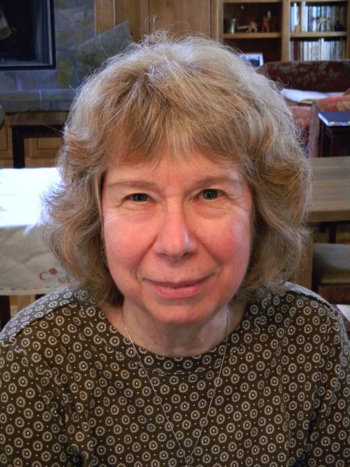Phyllis Solow (North Main)

Refugee Mural
Inside a large two story brick building in SE Portland, Oregon sits a large garment factory, Pendleton Woolen Mills. The first floor houses a large meeting room, one Men’s Room and one Women’s Room. A staircase leads to the second floor where a very large room is filled with workers. On the left are large tables with bolts of fabric and men stationed there whose job is to cut the fabric. On the right-hand side of the room are offices for management, all men, all white.
The rest of the room is filled with sewing machines. Each machine has a woman sitting at it. These are the sewers, whose pay is less than that of the male cutters. The sewers are divided into 2 groups, the older women, who sew the signature Pendleton woolen clothing. Most of these women have worked in this room since leaving high school. All of them are white, all women.
Southeast Asian refugees make up the second group. All of them are women. Many escaped their countries after the Vietnam War. Their job is to sew the blouses. Most speak limited English. Most have survived unthinkable trauma.
I taught Workplace English at Portland Community College, and was assigned to Pendleton with two other instructors. We met with management to find out what they wanted their sewers to learn. We had complete freedom to develop curriculum, and we planned on incorporating, art, music and movement. It was a dream job and a joy to work with students who were both eager to learn and grateful for the opportunity.
Our students came to class 3 times a week. Each class was an hour long, half of which was paid. The workers on the second floor were aware of us. They could hear the music, the laughter, and lots of animated conversation.
One Friday we rolled out butcher paper and asked the students to create images of their childhood homes. We had invited a reporter and a photographer from a local newspaper who were interested in doing an article. Without hesitation the students engaged in this project. When finished we all gathered around to listen to each woman describe her art work. The experience was filled with sadness and joy, much grief for what had been lost by the ravages of war. Photos were taken, interviews were conducted. We taped the project up on the walls of the room, walked around to look one last time and then we all left.
Monday afternoon we returned to the factory. We found the mural had been ripped from the walls and torn into shreds. We teachers were stunned. Who could have done this? And why?
Word travels fast in a workplace and it didn’t take long to get answers. The older sewers had never been given anything extra by the company. They had heard the sounds coming from the classes; they had seen the mural and their anger came to a head when they read the newspaper article complete with photographs. “What about us?” they asked. “We have worked at these machines for years and have never received anything extra. This is just not fair”. So, they released their fury in the only way they saw available to them.
We teachers had completely overlooked these women. We had not figured out a way to include them in the project. We had not provided any way for these two groups of women to get to know each other. Through this experience I learned the importance of inclusion. It is almost always the preferred road to take.